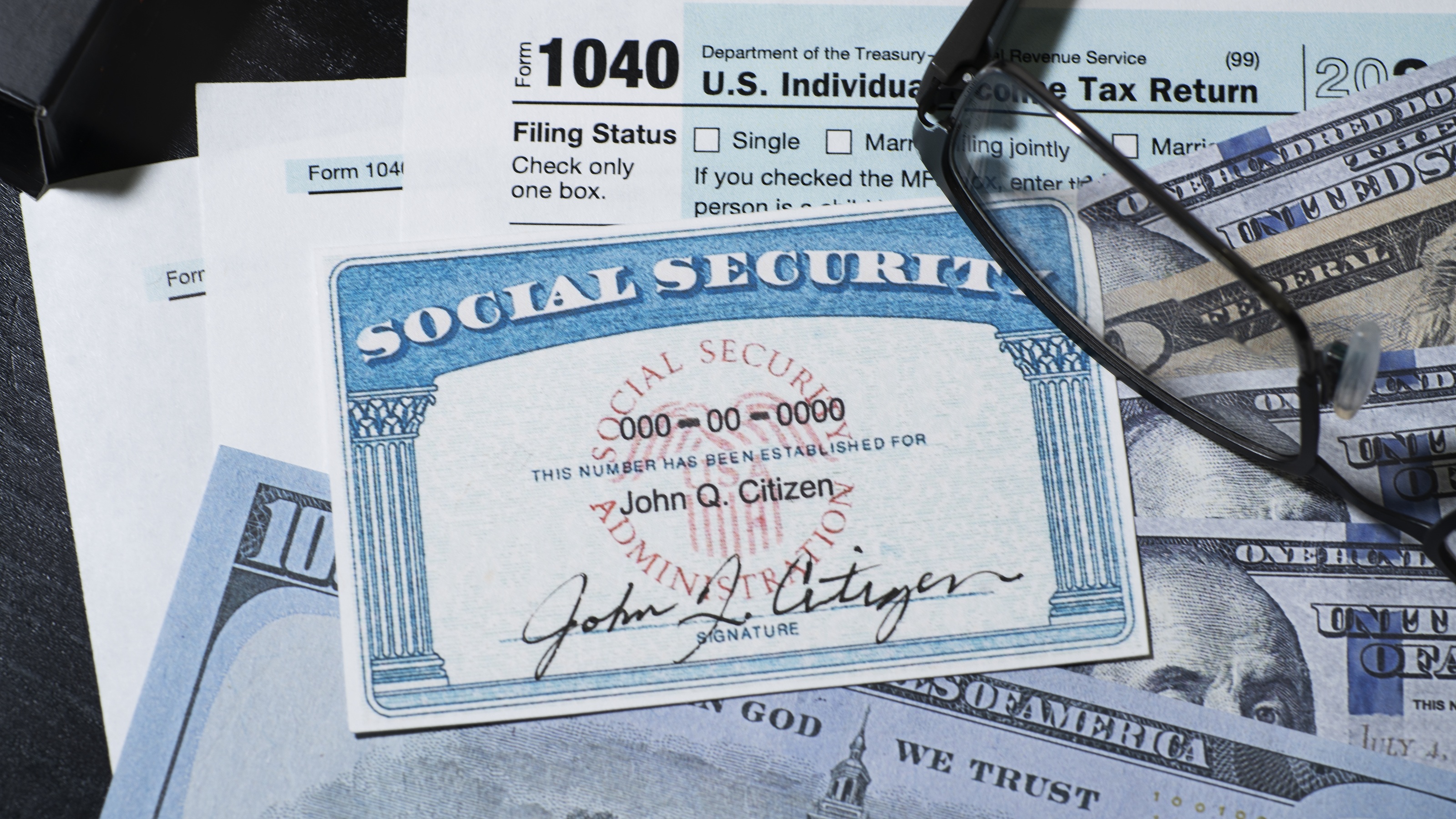Your Retirement Side Hustle Starter Kit: The Essential Tools and Apps You Need
Check out seven awesome tools and apps to jumpstart your retirement side hustle with confidence.


For a growing number of retirees, the golden years are taking an unexpected turn. The trend of "unretiring" — returning to the workforce after retirement — is on the rise.
Whether driven by rising living costs, a need for social engagement or just plain boredom, retirees are launching side hustles and finding new purpose, a trend that shows no signs of slowing down.
Roughly 13% of retired seniors ages 65 to 85 plan to return to work this year, according to a 2024 survey from ResumeBuilder.com, with 4% stating they are "very likely" to do so, and 9% indicating they are "somewhat likely."

Sign up for Kiplinger’s Free E-Newsletters
Profit and prosper with the best of expert advice on investing, taxes, retirement, personal finance and more - straight to your e-mail.
Profit and prosper with the best of expert advice - straight to your e-mail.
And 20% of retirees are already working either part-time or full-time, according to a recent T. Rowe Price report called “Unretiring: Why recent retirees want to go back to work."
Thinking about a side hustle? The right tools and apps can make all the difference. Dive into the essential starter kit to launch your unretirement journey today.
Seven must-have tools and apps to kickstart your retirement side gig
Starting a side hustle in retirement doesn’t mean learning complex systems or spending your hard-earned cash on expensive setups. With the right tools and apps, you can leverage your skills and manage your time — all while keeping things simple and stress-free.
Nic Adams, co-founder and CEO at Orcus, makes a good point. “Some individuals overlook that older adults often feel intimidated by technology or overwhelmed by too many options. That’s why it's important to focus on using just one or two tools.
Additionally, outdated software poses a challenge, causing issues such as privacy and security risks, as well as reduced productivity. Keeping firewalls, antivirus software and similar tools updated can help alleviate seniors' concerns.”
Here are a few of the many tools and apps to get your retirement side hustle up and running.
1. Todoist
Before you start, it’s time to set some goals and get organized. Todoist can help. It’s a digital to-do list that can help manage your day to squeeze in an hour at the gym, power through your side hustle and still have time for yourself.
Cost: Todoist offers three pricing tiers: The Beginner plan is free, the Pro plan is $4 per month, and the Business plan is $6 per month (billed annually).
2. Upwork, Fiverr, Freelancer
You have decades of expertise and practical knowledge, so turn your expertise into income using platforms such as Upwork, Fiverr and Freelancer (to name a few). After creating a profile, you’ll get connected with clients seeking your specific skill sets, such as consulting, writing, virtual assistance or tutoring.
Cost: These sites are free to join. Upwork charges a 10% service fee per project, while Fiverr takes 20% per gig, and Freelancer takes 10% of your total earnings.
Word of warning: Some listed jobs might be scams, so if a job is too good to be true, it probably is. Also, never pay anything up front, and double-check to ensure the company is legitimate by visiting its website and searching for reviews.
3. Rover and Wag
There are currently 63 million households that own a dog. Over the five years from 2019 to 2024, the number of independent and app-based dog walkers reached 1.8 million.
If you love animals and need an excuse to get outside and socialize, websites such as Rover and Wag are great places to start. You can set your availability, choose services such as dog walking or overnight pet sitting, and work in your local area.
Cost: It’s free to sign up, but Rover takes a 20% commission, and Wag takes 40%. Earn $100 to $200 per week, depending on your location and the number of hours you work.
4. Etsy and Shopify
Admit it. You’re pretty creative. The most popular places to sell your handmade or digital products, such as crafts, jewelry, knitting or writing, are on Etsy and Shopify (although there are others).
Etsy (both the app and website) is ideal for selling unique items, while Shopify allows you to create a personalized online store for a broader range of products.
Just to get an idea of your selling potential: 95.5 million active buyers shopped on Etsy in 2024. Both platforms are beginner-friendly, offering templates to set up your shop quickly.
Cost: Etsy charges 20 cents per listing and a 6.5% transaction fee. Shopify’s basic plan starts at $29/month. Start-up costs are minimal for digital products or items you already own.
5. Wyzant and Italki
Unfortunately, fewer than one in six American students receive tutoring of any kind, and fewer than one in 50 receive high-quality tutoring, according to Consumer Affairs. Fortunately, that means there is a need for experts like you.
If you have teaching experience or specialized knowledge, you can tutor students online via Wyzant or Italki. These platforms enable you to set your rates and schedule, making them ideal for retirees seeking flexible home-based work.
Cost: Free to join. Wyzant takes 25% of your first $3,000 earned annually, then 20%. Italki takes 15% per lesson.
6. TaskRabbit
Are you the handyman or woman who gets the call in the middle of the afternoon when your neighbor's pipe breaks, a bookshelf needs to be assembled or a close friend needs help cleaning their home? Put your brawn and mojo to the task with TaskRabbit.
Cost: You set your rates, which vary widely by task, location and experience. For example, in Atlanta in April 2025, cleaning rates ranged from $23.74 to $103.24 per hour.
Taskers (that’s you) pay a $25 registration fee and earn an average of $47 per hour, and you get to keep 100% of your hourly earnings, as well as 100% of any client tips.
7. DoorDash, Instacart, Uber & Lyft, Uber Eats
If you like to drive and meet people, then driving for DoorDash, Instacart, Uber Eats, Uber or Lyft might be the side gig you’re looking for.
Although each is a bit different — you might shop for and deliver groceries, or take someone to the airport — no prior experience is necessary, your schedule is flexible, and each opportunity offers low start-up costs (just a smartphone and a vehicle).
Cost: You get paid for completing a task. Many divers also receive tips, which are 100% yours to keep.
Lyft takes a 20% commission fee, and Uber takes 20% to 25% of each fare. Uber Eats pays $3 to $15 per delivery, DoorDash pays between $2 to $10-plus per delivery and Instacart charges no fees. You pay for gas and the wear and tear on your vehicle.
Tips for success
- Start small: Choose one service or product to avoid overwhelming yourself. Remember, you’re retired.
- Protect your benefits: If you're under full retirement age, keep your earnings below $23,400 per year to avoid Social Security reductions.
- Leverage your experience: Highlight your decades of expertise in your profiles or marketing to build trust with clients.
- Stay safe: Avoid scams by sticking to reputable platforms, such as those listed above. Never share personal financial details with unverified clients.
- Enjoy the journey: Pick a side hustle that aligns with your passions, whether it’s pets, teaching, driving or crafting. The goal of a side gig is to stay active, engaged and financially secure while having fun.
A side hustle can keep you happy in retirement
“The key to thriving in a side hustle is choosing tools that feel approachable and build your confidence," said Christina Muller, LCSW, Licensed Workplace Mental Health Expert and Strategist at R3 Continuum.
"That sense of momentum taps into something deeper: Our human need for purpose and alignment," she said. "When you feel productive, you're far more likely to be productive.”
Grab your laptop, pick a platform, and start building your unretirement adventure today.
Related Content
Profit and prosper with the best of Kiplinger's advice on investing, taxes, retirement, personal finance and much more. Delivered daily. Enter your email in the box and click Sign Me Up.

For the past 18+ years, Kathryn has highlighted the humanity in personal finance by shaping stories that identify the opportunities and obstacles in managing a person's finances. All the same, she’ll jump on other equally important topics if needed. Kathryn graduated with a degree in Journalism and lives in Duluth, Minnesota. She joined Kiplinger in 2023 as a contributor.
-
 The Fall Garden 'Tax': What to Plant and How to Prepare
The Fall Garden 'Tax': What to Plant and How to PrepareTax Tips Fall gardening could increase your taxes this season. Here’s what to know while planting in 2025.
-
 July CPI Report Boosts Rate-Cut Odds: What the Experts Say
July CPI Report Boosts Rate-Cut Odds: What the Experts SayThe July CPI report shows that tariffs are having a slight impact on inflation, though not enough to keep the Fed from cutting interest rates.
-
 Don't Be a '98 Pound Weakling' Just Because You're Aging
Don't Be a '98 Pound Weakling' Just Because You're AgingCharles Atlas's tips to the '98-pound weakling' might be the only comic book ads that actually paid off. Swap the X-ray glasses for this healthy habit.
-
 For Savers Who Hate Surprises, This Strategy Delivers
For Savers Who Hate Surprises, This Strategy DeliversThis approach gives you peace of mind, regardless of whether rate cuts happen.
-
 Are You Supporting Multiple Generations in Retirement?
Are You Supporting Multiple Generations in Retirement?Here’s how to support your parents and your adult children without sacrificing your retirement.
-
 Should You Buy a Second Home When You Retire?
Should You Buy a Second Home When You Retire?Buying a second home in retirement, especially with sufficient savings, can enhance your lifestyle or serve as a smart investment. But it requires careful planning.
-
 What the OBBB Means for Social Security Taxes and Your Retirement: A Wealth Adviser's Guide
What the OBBB Means for Social Security Taxes and Your Retirement: A Wealth Adviser's GuideFor Americans in lower- and middle-income tax brackets, the enhanced deduction for older people reduces taxable income, shielding most of their Social Security benefits from being taxed.
-
 Financial Planner vs Investment Manager: Who's the Better Value for You?
Financial Planner vs Investment Manager: Who's the Better Value for You?When markets are shaky, who do you trust with your money? A recent study provides useful insights into the value that different financial professionals offer.
-
 How to Navigate Your Medicare Advantage Plan in a Disaster
How to Navigate Your Medicare Advantage Plan in a DisasterIf you're a Medicare Advantage member in an area that has been impacted by a disaster, you might be worried about access to care and medicine. Here's what you need to know.
-
 Older Investors: Boost Your Savings and Retire Earlier
Older Investors: Boost Your Savings and Retire EarlierThis one measure can help older investors retire up to two years earlier and potentially double their retirement savings.